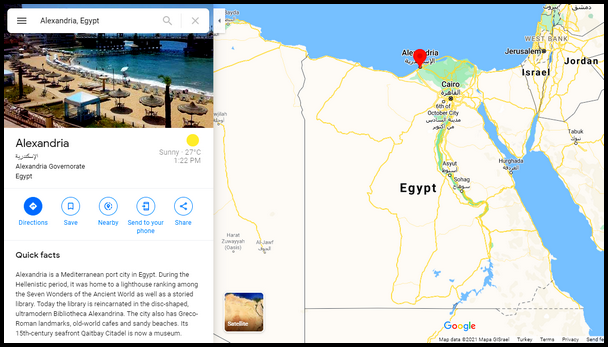
Introduction to Alexandria, Egypt
Alexandria is Egypt’s second largest city, after Cairo. It’s a breezy coastal city located on the country’s long northern Mediterranean Sea coast.
Historically, Alexandria was an extremely important international port with several impressive claims to fame and, at its peak, capital city of Alexander the Great (after whom the city is named).
I took a cruisy train ride up from Cairo to Alexandria and stayed four nights in order to explore the city’s many sites & attractions. Partly I wanted to (needed to) escape from filthy, dusty, roasting, densely-crowded, overly-noisy Cairo. Partly I wanted to see something more of Egypt outside the horrid capital (surely there must be nicer places in Egypt than Cairo, I reasoned). I hoped Alexandria would be an upgrade from Cairo.
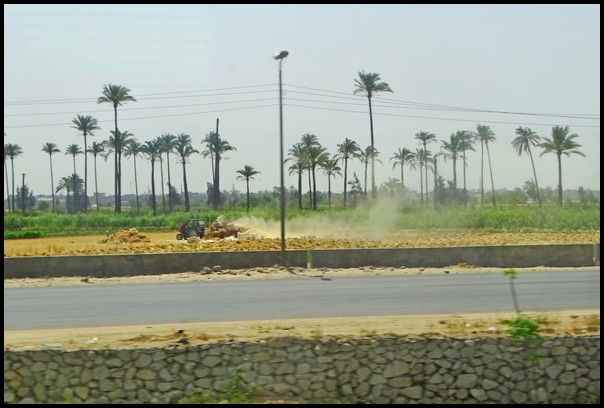
A relaxing, tranquil 4-hour train ride landed me in central Alexandria where I hailed a taxi to my quaint little hotel, set in a large historic building just one block from the sea.
As usual, I’d done my research about Alexandria and what to see & do there. I’d made a 4-day itinerary and had looked at photos of the city and its main attractions.
So I knew before I arrived that Alexandria’s shoreline stretches for miles & miles along the coast. Even so, when I actually reached the wide pedestrian coastal walkway in person, I was surprised at just how vast the city is and how long the shoreline extends.
It’s a pretty impressive sight, true be told, and reminded me a lot of Havana, Cuba with its very similar long coastal walkway called ‘malecon’.
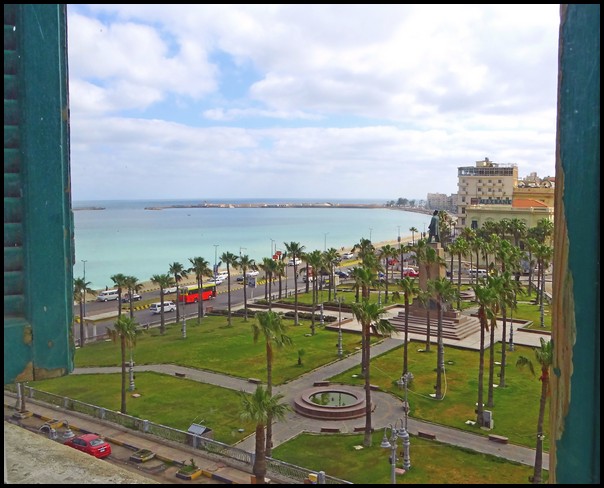
Alexandria’s Lay-out
In fact, the massive city stretches for more than 20 km / 12 miles along the coast, where a modern coastal highway, called The Corniche, runs beside the sea and sidewalk, backed by 20 km of high-rise buildings. They’re a mix of historic and modern 4-story to 20-story structures: apartment buildings, condos, hotels, restaurants, cafes and office buildings.
Along the water there are several rather narrow sandy beaches, separated from the highway by a low stone wall. They really aren’t the kind of beaches you’d go to swim or suntan at since they’re all backed by the massive city and are full of seaweed, flotsam and litter. But the sand is there, for what it’s worth (happily, much nicer beaches are found outside the city to east and west along the coast).
At the far western end, the coastline forms a bowl-shaped harbor that curves around in a narrow scorpion’s tail-like peninsula. Situated prominently on the tail tip is the handsome, historic stone fortress of Qaitbay. It’s one of Alexandria’s main sites.
Inside the protected curving bay there are dozens of small, colorful wooden fishing boats, which add a charming accent to the city.
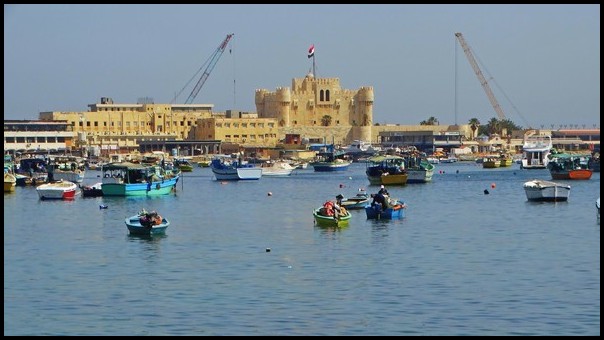
Inside the protected curving bay there are dozens of small, colorful wooden fishing boats, which add a charming accent to the city.
This curving bay is where Alexandria was originally founded way back in the year 332 BC by Alexander the Great. Consequently, most of the city’s historic sites are located in this area. Thousands of historic buildings line the coast, most in some state of dilapidation or disrepair.
Scattered among them along the coast there’s a majestic curved pavillion of Greek marble columns; a stunning historic mosque with intricately-carved marble turrets, doors and architectural detailing; a bright red historic building, formerly a hospital; a few stately renovated grand hotels and a mish-mash of other buildings.
Inland from the western end of Alexandria’s coast, there is a small but well-preserved Roman amphitheater, while the Royal Jewelry Museum and Alexandria National Museum are housed in grand historic mansions.
The incredibly long Corniche highway runs right beside the sea all the way to the far eastern end of the city. For the entire 20 km, it’s backed by densely-packed historic and modern buildings housing apartments, condos, restaurants, hotels and stores.
Twenty kilometers eastward, at the far end of Alexandria, there’s Montaza Palace Park & Gardens. The spacious grounds are full of tall palm trees and lawns. The original Sultan’s Palace still stands beautifully beside the sea, though visitors are not allowed to enter.
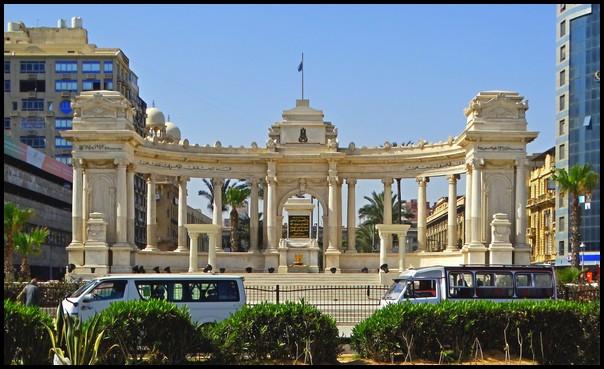
Alexandria’s Main Claims to Fame
1. Capital city of Alexander the Great
The Famous Greek ruler, Alexander the Great founded the city in 332 BC. It became a very important international port due to its location on the Mediterranean Coast and at the mouth of the vast Nile Delta.
Alexander had many grand buildings and structures built in the city, making it a very cosmopolitan, modern & beautiful city in its time. The most renowned building was the vast library, which also enabled Alexandria to become an international center for learning and culture.
Alexandria remained the capital of the Greek world, followed by the Roman and then Byzantine Empires, for a total of nearly 1000 years.
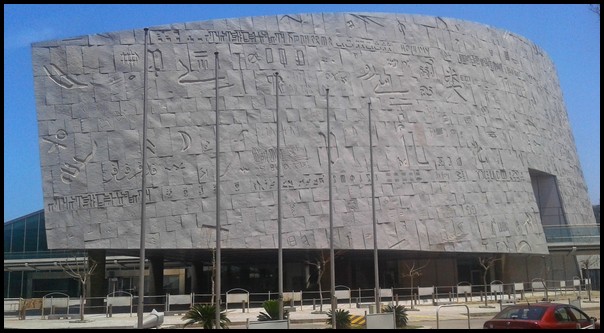
2. The Great Library of Alexandria
The Great Library of Alexandria was the largest library in the world for many centuries. It housed anywhere from 40,000-400,000 volumes. This helped make Alexandria one of the major intellectual centers of the world.
After several centuries, the great library gradually began to decline in importance and use, particularly during the later Roman Empire, when Rome became the center of the world. Trajically, the entire library and its precious books burned to the ground in the 270s AD during violent rebellions.
3. Alexandria Lighthouse – One of the 7 Wonders of the Ancient World
It’s a real pity that Alexandria’s world-famous lighthouse no longer stands. It was toppled by a series of massive earthquakes between 956 AD the early 1300s. For some reason, it was never rebuilt. Instead, in the late 1400s Qaitbay Fortress was built in its place, using stones from the lighthouse’s remains.
The lighthouse was built by the Greeks in the 200s BC, well after Alexander’s rule, on a tiny stone island in the bay. It’s estimated to have stood 103-118 M high / 338-387 ft. It was so tall that it could be seen by ships five miles away and was the tallest structure in the world for many centuries. It helped ships navigate the Alexandria coastline for an impressive 1500 years.
The lighthouse was so impressive that it was considered one of 7 Man Made Wonders of the World. Pity it’s gone.
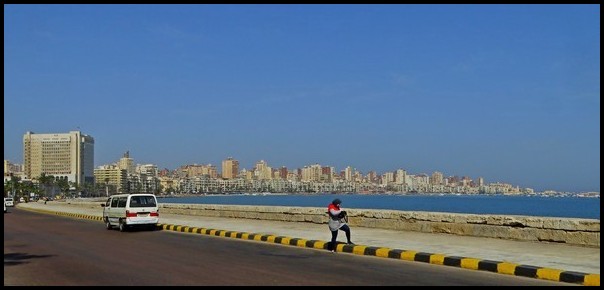
Main Sites to explore in Alexandria today
Walk and/or take a bus/taxi along the Corniche
You probably won’t want to walk the entire 20 km unless you’re a very avid walker and enjoy walking along a very busy roaring highway full of traffic.
A more reasonable walking distance extends in the western end’s curving bay between Qaitbay Fortress and the modern Alexandria Library. The 4-km walk takes about 45-60 minutes one way.
Along the way, you’ll see all the sites I mentioned above: decaying historic buildings, slices of sandy beach, Greek columns, beautiful mosques, colorful wooden fishing boats, as well as ever-changing views of the city’s panoramic coast.
If you get tired or don’t enjoy walking, simply catch a mini-bus or taxi. Frequent mini-buses run in both directs along the Corniche. They’re easy to catch and extremely inexpensive.
Just stand anywhere along the road and hail any passing mini-bus. State your destination and if they are going there, climb in and pay the fee, determined by the distance. A short trip is a mere 2 EGP ($0.12 US), while the whole 20-km trip costs about 5 EGP ($0.30 US).
You can also easily hail a taxi, but agree on a price before you get in. Some taxis may use a meter. It’s best to know how much the trip should cost beforehand and also to have your destination written in Arabic.
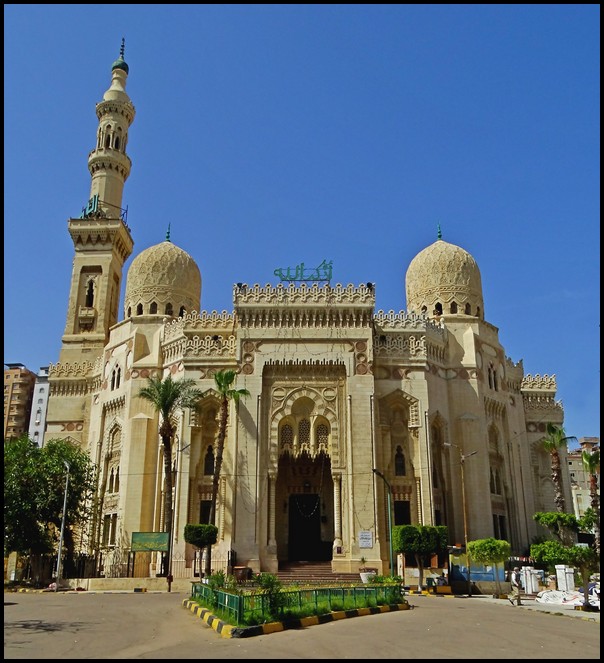
In western historic bay area
As mentioned above, in this curving bay you can explore all the following:
Qaitbay Fortress
This stately stone fortress was built by Sultan X in the 1400s on the site of the former lighthouse, long after its collapse from earthquakes in previous centuries. Now it’s one of Alexandria’s iconic sites and most popular attractions.
Boat harbor
Located at the western end of the curved bay near Qaitbay Fortress.
Curved Greek colonnaded pavilion
This curved marble pavilion can be seen prominently along Corniche highway, about halfway between Saad Zaghloul Park and Qaitbay Fortress.
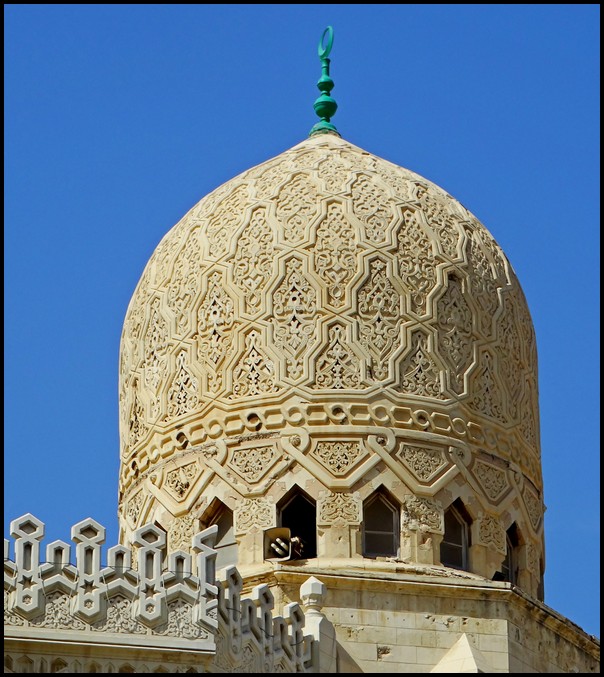
Sidi Abo El Abbas El Morsi Mosque
This elaborately-carved white-marble mosque is a spectacular sight. It contains the tomb of the 13th century Sufi saint of the same name. It’s situated right on Corniche highway about 2 km west of Saad Zaghloul Park (25-minute walk) and 1 km from Qaitbay Fortress.
Historic Cecil Hotel
This petite historic luxury hotel dates back to 1929, during Alexandria’s revival in the early 1900s when hordes of wealthy Europeans and Americans eagerly visited Egypt. Nowadays the boutique hotel still retains many of its beautifullly restored interiors. Well worth stopping into the lobby and bar to take a look, or stay overnight if it’s in your budget.
Now Steinberger Cecil Hotel, it’s located right on Corniche highway overlooking pretty, seaside Saad Zaghloul Park.
Modern Alexandria Library (Biblioteca)
The modern library, built on the site of the original, was designed in a completely different style, which is very contemporary and contains many Egyptian design elements. The vast library contains 8 million books.
Within the library grounds there are four themed museums, the library, and a planetarium. It’s located prominently on the Corniche highway, about 1.4 km northeast of Cecil Hotel, a 20-minute walk or 5-minute minibus ride.
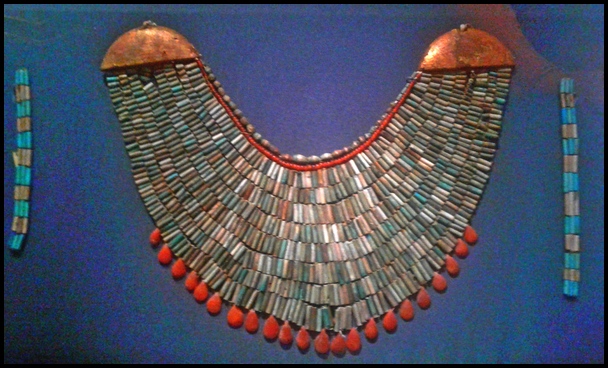
Inland from the coast
Roman Amphitheater
This small but intact outdoor marble amphitheater is situated right beside Alexandria train station. The grounds are surrounded by a high wrought-iron fence. You can see the amphitheater from outside the fence, but to get up close and see all the detailing such as stone mosaic pieces and a series of marble pillars, you need to pay an entry fee. It’s located just 1.2 km inland from the Corniche highway at Cecil Hotel, a 15-minute walk.
Alexandria National Museum
This small but worthy museum is housed in a historic 3-story stone Italianate mansion. Its exhibits cover Egypt’s entire history, from the Pharonic period through Greek, Roman and Ottoman periods. It’s located 1.6 km inland (south) of Alexandria Library, a 20-minute walk o 5-minute taxi ride.
Royal Jewelry Museum
This regal museum is housed in a gorgeous historic stone sultan’s palace and displays a large collection of jewelry, crowns, sword hilts, paintings, statues and other precious items from the former Sultan Muhammad Ali dynasty. The building interiors are as impressive as the collection. It’s located just a few blocks back from Corniche highway 7 km northeast of the library.
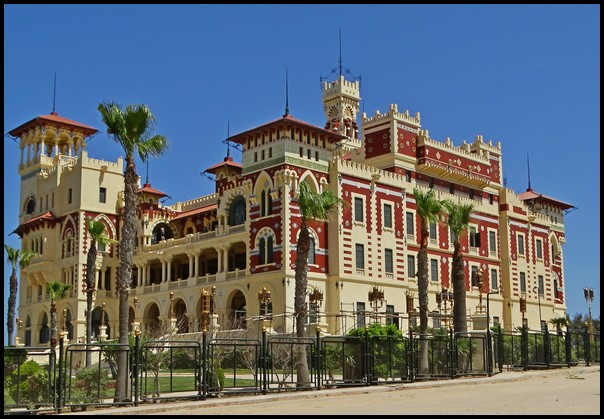
Further Afield
Montaza Palace Park & Gardens
A large palm-filled park with a beautiful historic sultan’s palace beside the sea. There’s a modest entry fee. It’s a nice place to stroll away from traffic for an hour or two. It also makes a great reason to take a mini-bus or taxi along the entire Corniche while viewing Alexandria’s entire 20-km coastline from very angle.
Catacombs of Kom al Shoqafa
This ancient archaeologica site includes underground carved-stone burial chambers, statues and tombs from Egyptian, Greek and Roman periods. It’s located about 4 km south from the Corniche road at Cecil Hotel. It’s a 20-25 minute drive or 45 minute walk.

Alexandria vs Cairo
As I mentioned at the beginning, after dealing with awful Cairo, I was quite curious to see what other places in Egypt are like. I was hoping Alexandria would be a pleasant break from the heat, chaos, noise and difficulties of Cairo.
Happily, as soon as I arrived I noticed that Alexandria is a definite step up from Cairo in many ways. Most notably, Alexandria has clean air, with a fresh breeze blowing in off the sea most times of day and night. This is a huge improvement on Cairo’s terrible air pollution and ultra-dry dusty air.
Secondly, Alexandria has the Mediterranean Sea, with its impressive coastline, beaches and refreshing wind. The city’s long, long coastline and ever-changing coastal views are quite attractive.
Restaurants are also much easier to come by in Alexandria, at least in the historic western coastal area. And the city is famous for its seafood.
On the other hand, just like Cairo, Alexandria has masses of roaring, noisy ever-congested traffic. Also like Cairo, the city is dirty, full of litter and decrepit crumbling historic buildings.
Finally, just like in Cairo, in Alexandria you can’t ever completely rely on internet connections, a/c, electricity, phone service or properly-running water in taps & showers. Taxi drivers often don’t know where they’re going. And many seemingly don’t read Arabic, let along English!
Unfortunately, all of these poorly-functioning services and difficulties seem to just be part of Egypt, no matter where you go or what quality of accommodation you stay in.
You might also like:
Train trip from Cairo to Alexandria
8 Surprising Facts about Cairo
===============================







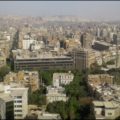
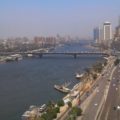

 Hi! I'm Lash, an American nomadic world traveler who's been traveling solo since 1998. I’m passionate about traveling the world nomadically and then sharing it all with you. I hope to inspire you to travel the world, to entertain you with tales from the road, and to help you reach your travel dreams. Welcome!
Hi! I'm Lash, an American nomadic world traveler who's been traveling solo since 1998. I’m passionate about traveling the world nomadically and then sharing it all with you. I hope to inspire you to travel the world, to entertain you with tales from the road, and to help you reach your travel dreams. Welcome! 



